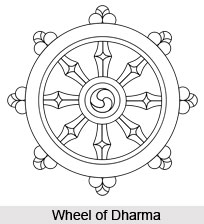 According to Buddhism, Maitreya is the future Buddha. He will be a bodhisattva, whose primary work will be to achieve absolute enlightenment and spread the knowledge of pure Dhamma. According to the Buddhist texts Maitreya will be the successor of Gautama Buddha. In the entire Buddhist canonical texts reference to the prophecy about Maitreya is to be found. Almost all the Buddhist followers believe that this prediction will definitely come true. In the Sanskrit canon, Maitreyavyakara, it is said that humans and even gods will worship Maitreya as a teacher of tantra.
According to Buddhism, Maitreya is the future Buddha. He will be a bodhisattva, whose primary work will be to achieve absolute enlightenment and spread the knowledge of pure Dhamma. According to the Buddhist texts Maitreya will be the successor of Gautama Buddha. In the entire Buddhist canonical texts reference to the prophecy about Maitreya is to be found. Almost all the Buddhist followers believe that this prediction will definitely come true. In the Sanskrit canon, Maitreyavyakara, it is said that humans and even gods will worship Maitreya as a teacher of tantra.
The name, Maitreya, literally means loving kindness. It can also mean a friend. It is said that the coming of Maitreya will be marked by a number of events. One being that the oceans will decrease in size so that Maitreya can easily travel through them. The current existence of human beings will improve with the arrival of the future Buddha. They will come face to face with Truth and Dhamma with the help of the Maitreya.
There are lots of theories regarding the origin of Maitreya. While some believe that it is similar to Zoroastrian Mithra others are of the view that the concept has originated from Hindu Kalki. One of the most interesting things about Maitreya is that it has been represented through several forms of paintings. The Greco-Buddhist art of Gandhara portrays the future Buddha as a Central Asian or North Indian nobleman who is holding a water phial in his left hands. In some places he is also seen as holding a wisdom urn or bumpa. This Buddha is believed to be living in Tusita Heaven.
In Budai form Maitreya is represented as seated with both feet on the ground. This posture implies that he has not yet completed ascending the throne. He is either seen dressed as a bhikshu or as an Indian sovereign. In case he is represented as a Bodhisattva he is seen standing bejeweled and wearing a small stupa in his crown.
In Mahayana Buddhism it is widely believed that Maitreya has revealed the Five Treatises of Maitreya. Largely based on the Third Turning of the Wheel of Dharma these are important texts as they are the foundation of the Yogachara tradition.




















